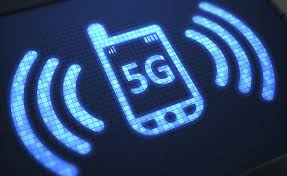advertisement
5G or faux G?
I am so, so tired of reading stories proclaiming the mobile wonders of the world of tomorrow. 5G will bring…

I am so, so tired of reading stories proclaiming the mobile wonders of the world of tomorrow. 5G will bring up 8K videos to our self-driving cars, and it will do it 100 times faster than 4G! Give me a break.
I am not cynical. I am realistic. And the reality is that 5G will not be that fast. And at least for the next few years, it will be available in just a few cities, and only in a few square blocks of those. In other words, it would be foolish this year to pay extra for any of the handful of 5G phones that will be available. Same goes for 2020. And, for that matter, 2021.
Let me tell you why.
advertisement
First, 5G is a whole mess of technologies. Only one of those, T-Mobile’s 600MHz 5G network, will be broadly available. That’s because T-Mobile has long deployed a 600MHz 4G network, which tops out at about 10-20 Mbps. It should be relatively easy to adapt that to 600MHz 5G, which could hit speeds of up to 100 Mbps.
In theory, at least. You see, there’s no silicon available today that supports 600Mhz 5G. Qualcomm isn’t expected to deliver the first 600MHz 5G chips until mid-2019.
And who knows how fast 5G will really go? You shouldn’t buy into the hype about of 20 Gbps speeds and 1 millisecond latency. I doubt we’re going to see speeds much above those of 600MHz 4G.
advertisement
What we do know is that 600MHz 5G will cover limited areas. What you think of as 5G, with all the speed and fancy trimmings, will have a range of a few hundred yards — if we’re lucky.
Oh, and when you’re inside, you’ll want to stay close to the windows. That’s the only way you’re going to get a signal.
That’s because the millimeter wave (mmWave) 5G that AT&T and Verizon are bringing us has no range or penetration to speak of. 4G, in comparison, has a practical range of about a dozen miles.
advertisement
To overcome that, the telecoms are going to have to put 5G femtocells everywhere — and I mean everywhere.
There are a couple of problems with this. First, they will need to get permission to put all those femtocells, which are about the size of microwave ovens, in place. Then they must hook them up to fast fiber cable to deliver 5G speeds — because, as always, a network is only as fast as its slowest link. And, finally, they have to actually install the femtocells.
What does all this mean? One thing it means is that anytime a telecom provider puts out a 5G mmWave coverage map, you can assume it’s being less than honest if the coverage looks like anything larger than pinpricks. And that’s in large cities. There is simply no way 5G will be deployed anytime soon that will cover even urban areas to any significant degree. The suburbs? The countryside? Forget about it.
AT&T and Verizon can squabble all they like over who’s really first with 5G. The truth is neither will really be delivering it in a meaningful way until, say, 2025. Yes, I’m serious. The best case is that real 5G is at least six years away.
Nationwide coverage? Please! T-Mobile can do it with its 600Mhz, but the really good mmWave stuff? That’s not going to be happening in any foreseeable time frame.
Even in places where 5G could be installed early on, such as business and convention centers, it wouldn’t make that much of a difference. That’s because in places like that good old Wi-Fi has far better penetration.
So, yeah, I am very, very tired of hearing about how revolutionary 5G is going to be. For the next several years we’ll still be using 4G. Don’t let any phone salesman or telecom CEO tell you different.